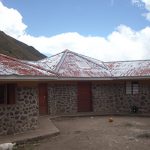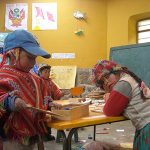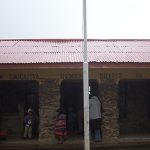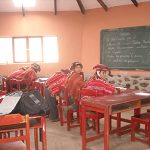This project will improve access to early childhood education and improve the quality of pre-school and primary school education. It will accomplish this through the provision of much needed educational materials and enhanced teacher training. As well, infrastructure repairs will bring welcome improvements to these communities, located in the Patacancha valley above Ollantaytambo. For this project we have teamed up with the HoPe Foundation, a Dutch NGO that has extensive experience working in high altitude communities in the area of education, particularly in early childhood education.
Part A – Pre-school (PRONOEI)
In Peru, public pre-school education for children between the ages of three and five is offered in two ways. The first is through formal pre-schools in Centros de Educación Inicial (CEIs) that have ‘qualified’ teachers who are paid by the Ministry of Education. This system follows a pre-school curriculum set by the Ministry of Education, similar to kindergarten. The second form is through informal, community-based programs called Programas no Escolarizados de Educación Inicial (PRONOEIs). Here, the sessions are lead by an ‘animator’, typically a woman from the community, who is trained and supervised by a co-ordinator from the Ministry and is paid one- third of the salary earned by a pre-school teacher in what is considered a ‘volunteer’ wage. PRONOEIs emerged as a low-cost alternative to increase enrolment for pre-school education. At present, PRONOEIs are mainly offered to children living in economically and socially deprived areas (60% in rural areas). This is currently the type of pre-school education offered in the communities of Yanamayo and Quelcanca.
In both Yanamayo and Quelcanca, the Ministry of Education has been unable to contract an ‘animator’ to work in the two communities for the standard, ‘volunteer’ wage (monthly, about 300 soles, or $US 110). One of the major disincentives is the very remote location of the two communities. To reach the schools, the teachers typically hire a car, which can be quite expensive. From Ollantaytambo, the journey takes three to four hours, depending on road conditions. To return, the teachers walk four to five hours to the community of Patacancha, where they can find a vehicle to drive them the remaining one-hour distance to Ollantaytambo. In addition to the distance, both communities are located well above 3,500 meters, which contributes to harsh environmental conditions. At nighttime, the temperature often drops to the freezing mark.
To create an incentive to work in these two remote, underprivileged communities, our project will be supplementing the wage of the PRONOEI teachers with an extra 150 soles, or $US 55, per month.
Yanamayo
In Yanamayo, for the past four years, there has been no PRONOEI school program. This year, with the little extra money our project added to the PRONOEI teacher’s wage, the Ministry of Education has been able to contract an ‘animator’ to run the PRONOEI for the year. There are currently 13 children between the ages of three and five from the community who now have access to formal education.
Quelcanca
In the community of Quelcanca there is no PRONOEI program. The Director of the primary school in Quelcanca tells us that children who should be in PRONOEI regularly come to the school asking if the PRONOEI program has begun. Often, these children just wander around the school property during the day. There is little the teachers at the primary school can do because they are already understaffed, with only two teachers teaching six grades. By supplementing the teacher’s wage, however, we soon hope to find an ‘animator’ who will run the PRONOEI program for the community.
The HoPe Foundation will also be providing ongoing support to the PRONOEI teachers in both communities through the provision of much need materials, as well as through regular capacitation workshops.
Part B – Primary School
In addition to improving both access and quality of pre-school education in the communities of Quelcanca and Yanamayo, this project also seeks to improve the quality of education at the primary school level, through providing materials and equipment, as well as by repairing the infrastructure of the primary schools.
In the case of the primary school in Quelcanca, the floors of one of the classrooms will be repaired. In Yanamayo, repairs will be made to the solar panel (given the remote location of the school, there is no access to electricity) and a new septic tank will be built.
September 2011 Update
The construction of a septic tank and the installation of a solar panel have both been finished and are working well. Yanamayo’s PRONOIE is open and the children are happy.
In Quelcancha, new floors have now been installed in the classrooms and the PRONOEI is open as well.
January 2012 Update
This project has been completed.




